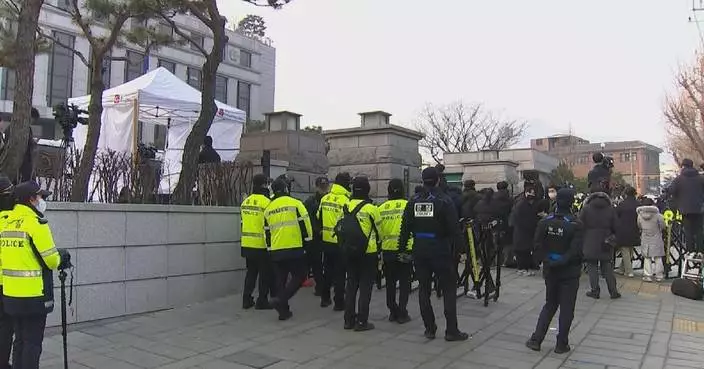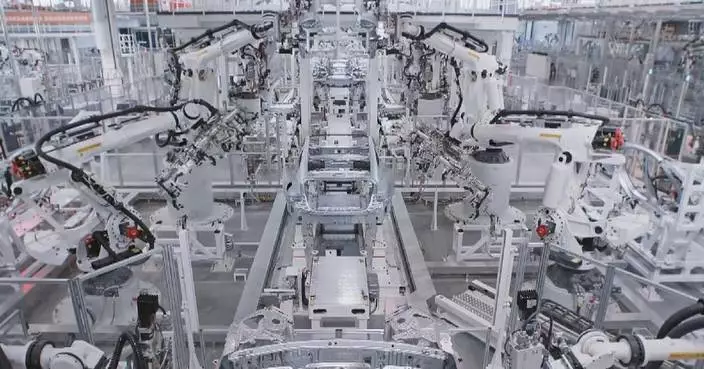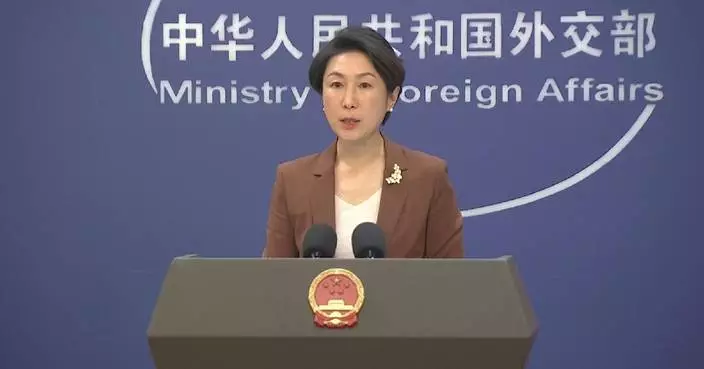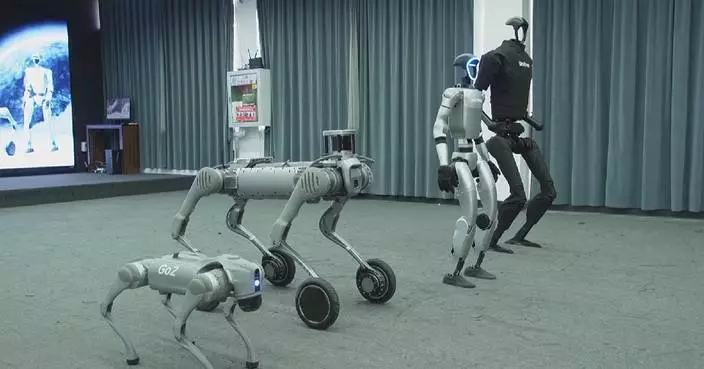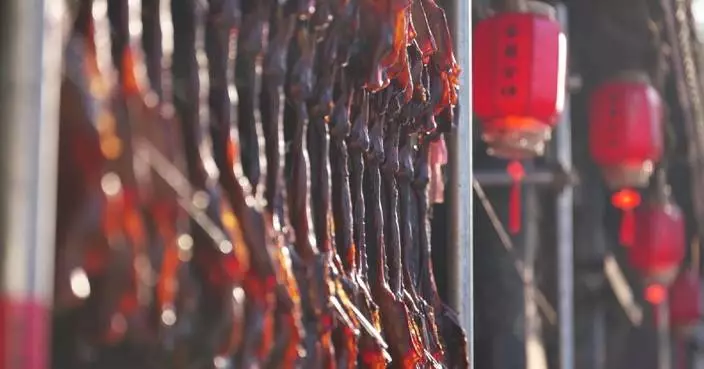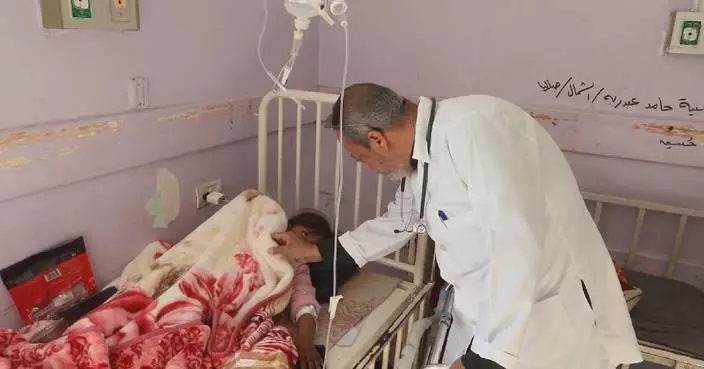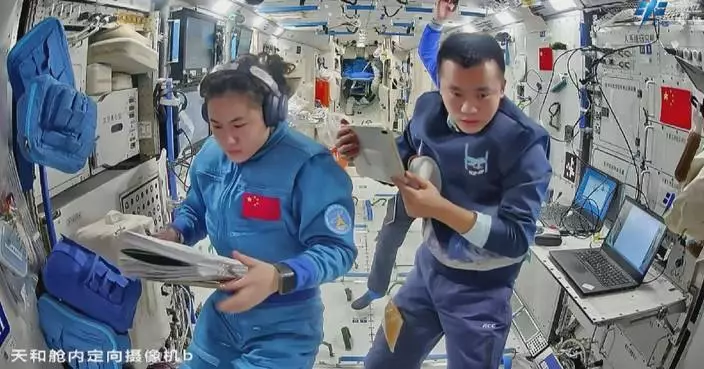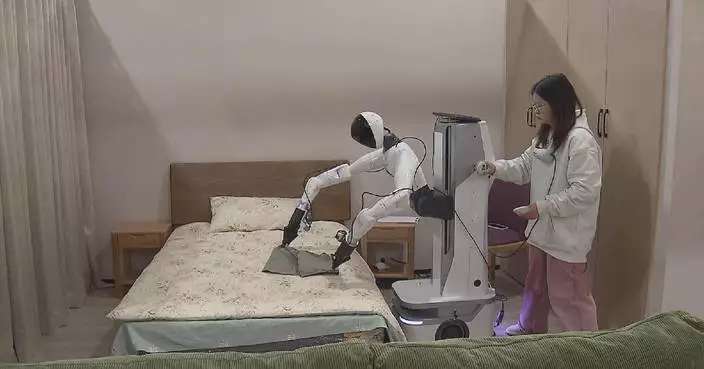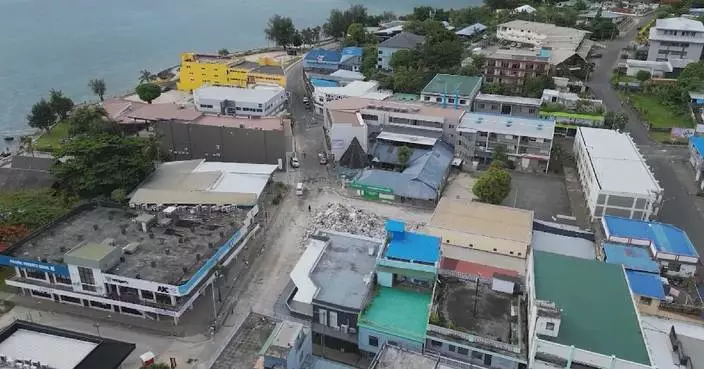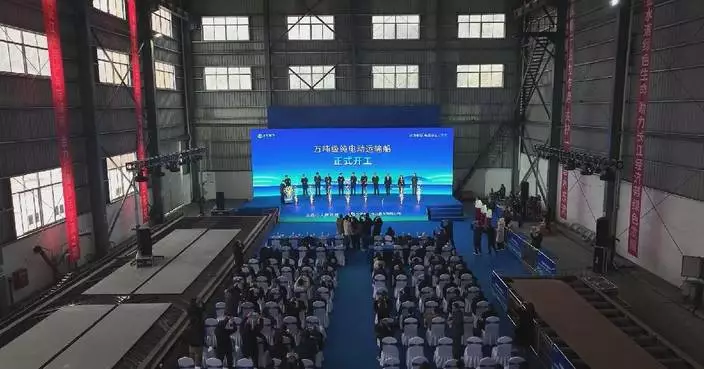Bakeries in Taiwan are experiencing a surge in customers, with long lines forming as people rush to purchase mooncakes ahead of the traditionally celebrated Mid-Autumn Festival.
In Taiwan, the Mid-Autumn Festival is a cherished tradition with family reunions and festive gatherings, marked by moon-gazing, feasting on mooncakes, peeling pomelos, and savoring family moments.
Mooncakes and pineapple cakes are essential to the festival.
A renowned Taipei bakery is bustling with activity and long lines formed outside. Many customers wait over half an hour to select their favorite Mid-Autumn treats.
"Since I work away from home, I don't get to reunite with my family often. Mooncakes are an important gift. When we gather, it's a moment of completeness, just like the full moon. And the egg yolk puff is round too, symbolizing reunion and completeness," said a local resident.
Traditional flavors like green bean mooncakes and red bean egg yolk puff, with their delicate crusts and fresh fillings, are deeply prized by the local community.
To pander to the needs of surging consumers, the bakery which has been running in Taipei for 50 years, has extended its business hours by an hour during this busy season.
"Long lines stretch from 08:00 to 21:00 in front of our shop every day and sales are booming. This year, we've partnered with a renowned artist to design a special festive gift box. It contains all our products in one package, allowing customers to enjoy all kinds of flavors easily," said the shop's manager.
The Mid-Autumn Festival, celebrated on the 15th day of the eighth month on the Chinese lunar calendar, falls on Sept. 17 this year.
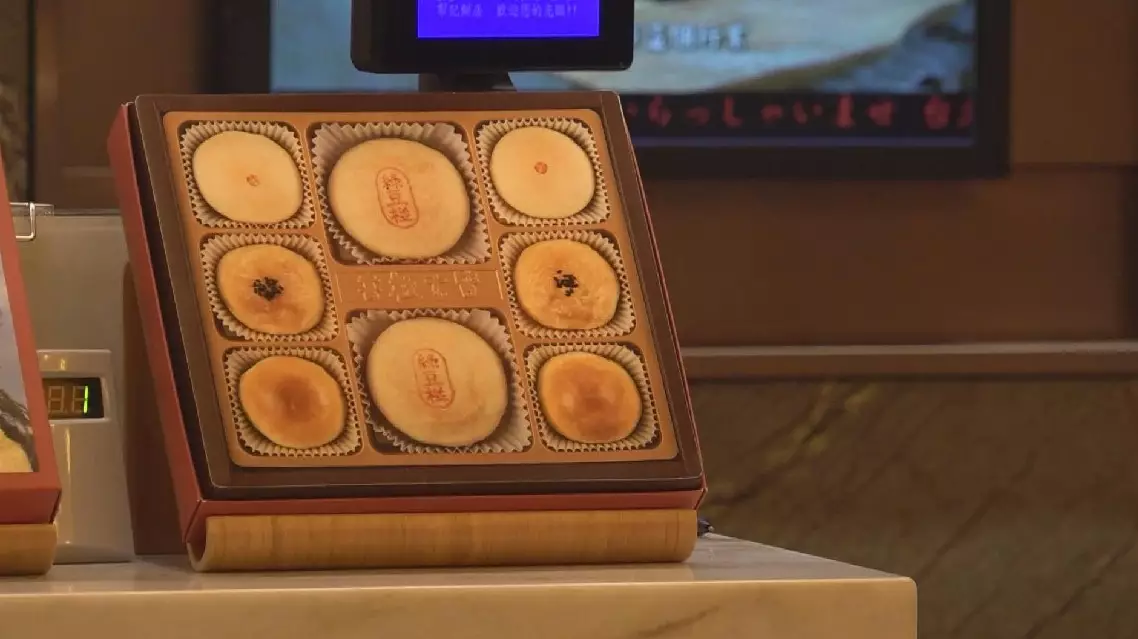
Taiwan residents rush to buy mooncakes ahead of Mid-Autumn Festival
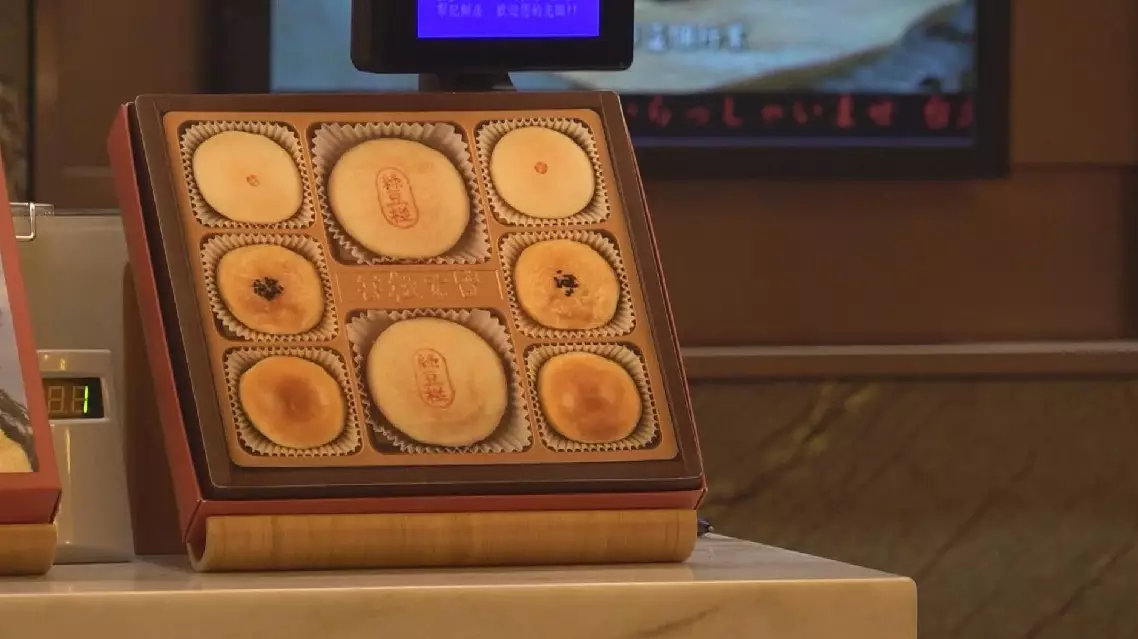
Taiwan residents rush to buy mooncakes ahead of Mid-Autumn Festival
Festive receptions were held by Chinese embassies to celebrate the upcoming Spring Festival, with the promotional video for the 2025 China Media Group (CMG) Spring Festival Gala unveiled to add festive atmosphere to the events.
The Spring Festival centers around the Chinese New Year, which lands on Jan. 29 this year, ushering in the Year of the Snake.
The Chinese Embassy in Tajikistan hosted a Spring Festival reception on Jan. 20 for overseas Chinese in Tajikistan. Nearly 300 people, including representatives of overseas Chinese groups such as the Chinese Chamber of Commerce in Tajikistan, the Federation of Overseas Chinese, teachers and students from the local Confucius Institute, and international students in Tajikistan, gathered to celebrate the coming of the Year of the Snake.
In his speech delivered at the reception, China's Ambassador to Tajikistan Ji Shumin said that China's high-quality development and high-level opening-up have injected certainty and stability into a turbulent and changing world. China-Tajikistan cooperation in various fields has been promoted across the board, and the development of bilateral relations has reached a new level. Looking forward to 2025, China-Tajikistan relations will shine with new vitality and bring more benefits to the people of both countries, said the ambassador.
The promotional video for the 2025 CMG Spring Festival Gala was played in a loop at the reception. By watching the video, guests felt the festive atmosphere of the Spring Festival and the unique charm of Chinese traditional culture.
At the reception, overseas Chinese in Tajikistan performed a variety of cultural programs created by themselves. The joyous lion dance, the melodious guzheng performance, and the passionate Tajik eagle dance added a great deal to the festive atmosphere.
The Chinese Embassy in the Philippines, the Federation of Philippine-Chinese Chambers of Commerce and Industry, the Federation of Philippine-Chinese Associations, and the Philippine-Chinese Chamber of Commerce jointly held a Spring Festival reception on Jan. 19. More than 1,000 people from the Philippine government, Congress, overseas Chinese, people from all walks of life, and foreign diplomatic envoys to the Philippines gathered to celebrate the festival.
Huang Xilian, Chinese Ambassador to the Philippines, extended New Year greetings to people from all walks of life in China and the Philippines, saying that the Spring Festival is a common festival for the people of many countries, including China and the Philippines, and has been listed as an intangible cultural heritage of humanity by UNESCO. He said that this year marks the 50th anniversary of the establishment of diplomatic relations between China and the Philippines, and he hopes that both countries will cherish and maintain the bilateral relations for greater benefits to the people of the two countries.
Philippine Vice President Sara Z. Duterte and Louise Araneta-Marcos, wife of Philippine President Ferdinand Romualdez Marcos Jr., extended new year greetings via video link. Duterte said that the 50th anniversary of the establishment of diplomatic relations between the Philippines and China is of great significance, and she looks forward to the two countries working together to create a harmonious and prosperous future. Marcos said that the Philippines-China relations have been developing continuously for decades, which truly reflects the long-term friendly relations between the people of the two countries.
The promotional video for the 2025 CMG Spring Festival Gala was played at the reception. The festive atmosphere and gorgeous stage design attracted the attention of all the guests present.
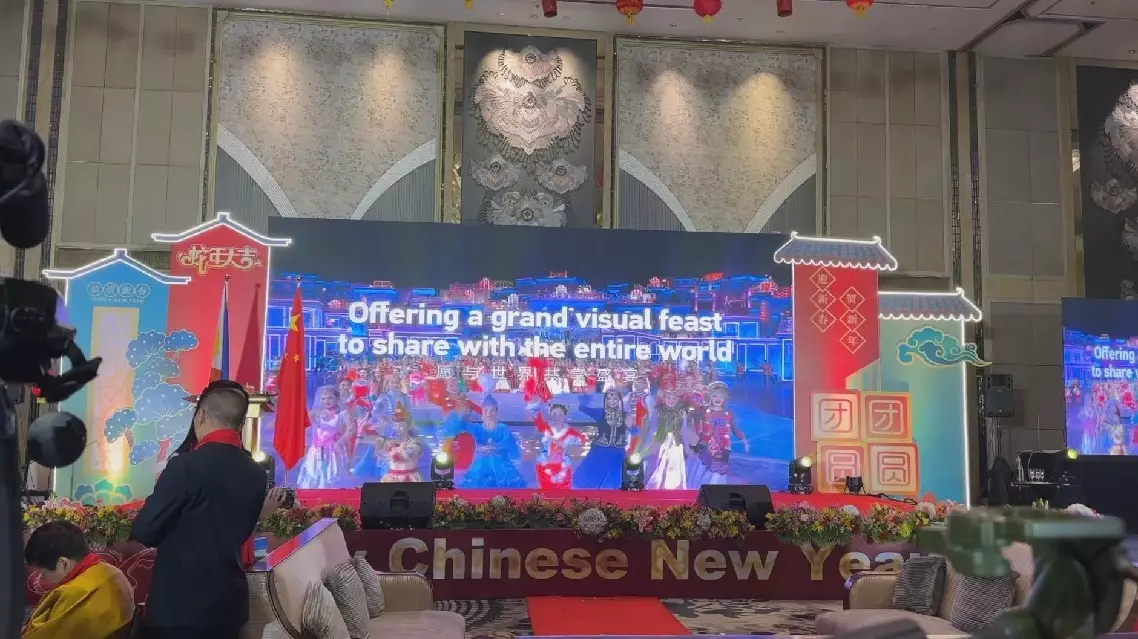
Chinese embassies hold receptions to celebrate upcoming Spring Festival








